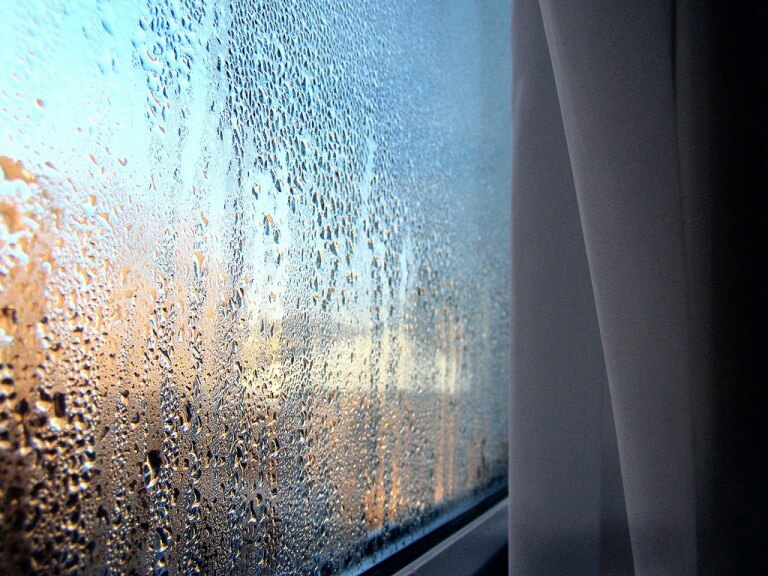Dealing with condensation on windows is a common household challenge that many homeowners face, particularly during the colder months. While a small amount of window condensation might seem harmless, excessive moisture can lead to serious problems like mould growth and even structural damage if left unchecked.
In this comprehensive guide, we’ll explore why condensation forms on your windows and share effective strategies to prevent it. As the colder months arrive, you’ll want to make your home as winter ready as possible!

Understanding Window Condensation
When warm, moisture-laden air meets a cold surface like a windowpane, the water vapour in the air condenses into liquid droplets. This process occurs more frequently in winter when the temperature difference between indoor and outdoor air is greatest.
It’s important to remember that condensation on the exterior of the window means that your windows are working effectively. Interior condensation should be looked at and treated where possible. Condensation between the two panes of a double glazed window indicates that the seals have failed. In this case, you’ll likely need to replace the window.
Effective Methods to Prevent Interior Window Condensation

Ventilation
One of the most effective ways to combat window condensation is through proper ventilation. Opening your windows daily for at least 20 minutes will help to reduce condensation levels. Trickle vents are an option to create adequate interior ventilation.
You could also try creating cross ventilation by opening windows on opposite sides of your home. You can do this for a smaller amount of time to avoid your home interior becoming too cold.
Example of where water vapour comes from internally:
Breathing: two sleeping adults produce approximately 1 litre of moisture in 8 hours, which is absorbed as water vapour into the atmosphere.
Smart Laundry Management
Wet laundry is a significant source of indoor moisture. To reduce condensation, try to dry clothes outdoors whenever possible. If indoor drying is necessary, use well-ventilated areas. You could also consider using a dehumidifier near drying areas to remove excess moisture from the air.
Effective Moisture Control in High Humidity Areas
Bathrooms and kitchens generate significant moisture. To manage this, use extractor fans during and after cooking, showering, or bathing. Keep bathroom and kitchen doors closed during these activities and ensure extractor fans are properly maintained and efficient
Temperature Regulation
Maintaining consistent indoor temperatures helps prevent condensation. Keeping your home at a stable temperature throughout the day will help you to avoid extreme temperature fluctuations. Use your heating system efficiently with thermostatic controls or setting a timer for the heating to come on in the mornings and evenings.
Managing Indoor Plants
While plants add beauty to your home, they can contribute to moisture levels. If possible, reduce the number of houseplants if condensation is persistent. You could also try grouping plants together in well-ventilated areas or using moisture loving plants in naturally damp areas.
Dealing with Double Glazing Condensation

As mentioned above, if you notice condensation between double glazed panes, this indicates a failed seal. In this case you could consider the following options:
- Replacing the affected glass unit
- If windows are old, full replacement might be more cost-effective
Sometimes, persistent condensation issues might signal it’s time for new windows. Modern double glazed units offer far better thermal efficiency and improved moisture resistance than older windows. They will also help you to make significant savings on reduced heating bills.
Preventing window condensation requires a multi faceted approach combining proper ventilation, moisture control, and temperature management. By following these guidelines, you can significantly reduce condensation issues and protect your home from related problems like mould and structural damage.
If you’re experiencing window condensation or are considering upgrading your double glazed units or windows, Great Harwood Windows can help. Why not download our handy Care and Maintenance Guide and Condensation Brochure for more detailed information.
If you’d like to speak to one of our friendly team you can call us directly on 01254 690009 or e-mail info@greatharwoodwindows.co.uk and we’ll get back to you as quickly as possible.













